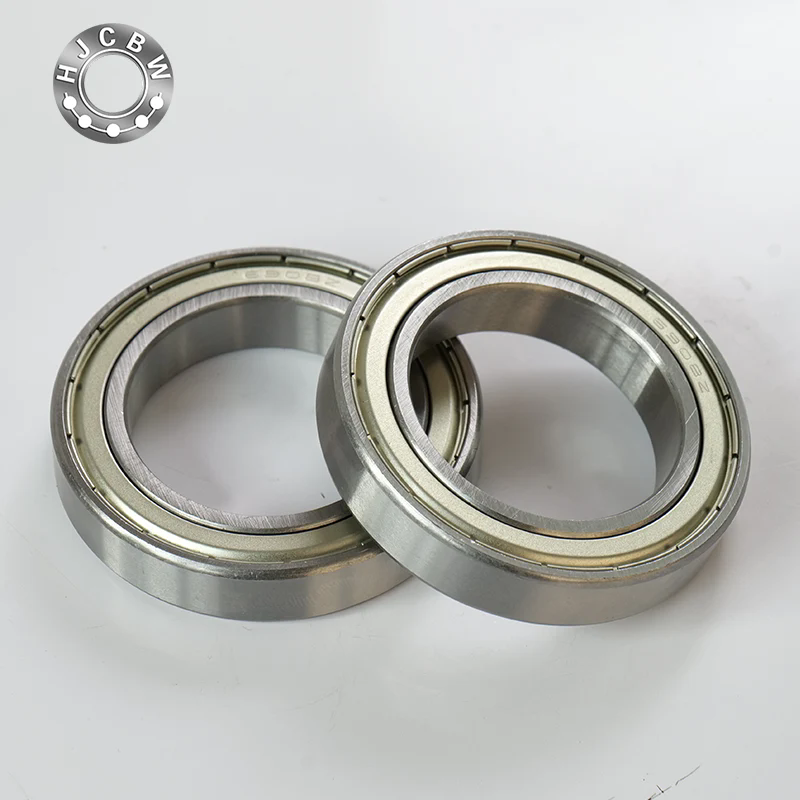Thin Section Bearings: The Unsung Heroes of Precision Engineering
2025-04-01
In the world of precision engineering, every component plays a vital role in ensuring optimal performance, especially when it comes to applications that demand high accuracy and reliability. One such component that often goes unnoticed but is crucial in many industries is the thin section bearing. These specialized bearings are designed to offer exceptional performance in compact spaces and are essential for a wide range of applications. In this blog, we will explore what thin section bearings are, their benefits, and the diverse industries that rely on them.
What are Thin Section Bearings?
Thin section bearings are a type of ball bearing that is designed with a relatively small cross-section compared to conventional bearings. This design allows them to operate efficiently in applications where space is limited but high performance is required. Typically, they feature a thin inner and outer ring, with rolling elements (balls or rollers) that provide smooth rotational movement.
Unlike traditional bearings, which often have a thicker structure, thin section bearings are lightweight, compact, and can withstand high loads, making them ideal for use in tight or limited spaces. They are available in various types, such as angular contact, radial, and four-point contact, each designed to meet specific needs depending on the application.
Key Benefits of Thin Section Bearings
The popularity of thin section bearings across many industries can be attributed to the unique advantages they offer. Let’s take a closer look at the key benefits:
1. Compact and Lightweight
One of the most significant advantages of thin section bearings is their compact design. These bearings are ideal for applications where space is a constraint, such as robotics, aerospace, or medical devices. Their slim profile ensures they can be used in tight spaces without compromising performance or reliability. This makes them particularly useful in high-precision instruments where every millimeter counts.
2. High Precision and Performance
Despite their small size, thin section bearings provide high precision and excellent rotational performance. The design allows for smoother motion, reduced friction, and increased efficiency. These bearings are built to withstand high-speed operations, making them an ideal choice for applications that require consistent, reliable performance over time.
3. Load Capacity
Although thin section bearings are designed to be lightweight, they are capable of handling relatively high loads compared to traditional bearings of similar size. The precision engineering of these bearings allows them to support radial, axial, and moment loads, making them versatile for various applications. Whether the load is static or dynamic, thin section bearings can maintain consistent performance even under demanding conditions.
4. Versatility in Design
Thin section bearings come in a variety of designs, including radial ball bearings, angular contact bearings, and four-point contact bearings. This versatility allows them to be customized for specific applications, whether it’s in machinery, robotics, or even precision medical devices. They can handle a wide range of speeds and operating conditions, making them suitable for a variety of industries.
5. Corrosion Resistance
In some applications, bearings are exposed to harsh environments, such as moisture, chemicals, or extreme temperatures. Many thin section bearings are made with corrosion-resistant materials or coatings, ensuring longevity and reliable performance in challenging conditions. This feature makes them suitable for industries like marine, food processing, and medical equipment, where cleanliness and durability are essential.
Applications of Thin Section Bearings
Thin section bearings are used in a wide array of industries due to their unique combination of precision, load capacity, and space-saving design. Below are a few examples of where these bearings play a crucial role:
1. Aerospace and Aviation
In the aerospace and aviation industries, the performance of every component is critical, and thin section bearings are often used in aircraft engines, landing gear systems, and satellite mechanisms. Their ability to operate efficiently under extreme conditions, including high speeds and varying temperatures, makes them ideal for aviation applications. These bearings help ensure smooth operation and contribute to the overall safety and reliability of aircraft.
2. Robotics and Automation
Robotic systems require highly precise and reliable components to function efficiently, and thin section bearings provide the smooth motion needed for robots to perform complex tasks. Whether it’s in industrial robots, robotic arms, or automated machinery, thin section bearings allow for fine movements and accurate positioning. Their compact size also makes them suitable for use in small robotic systems where space is limited.
3. Medical Devices
Thin section bearings are commonly used in medical devices that require high precision and minimal space, such as MRI machines, surgical instruments, and dental equipment. These bearings ensure that the devices operate smoothly and accurately, minimizing the risk of error and improving the overall performance of critical medical equipment.
4. Machine Tools and Precision Instruments
Machine tools such as CNC machines and lathes rely on thin section bearings for precise rotational movement and minimal friction. These bearings help ensure that the tools maintain accuracy and stability during machining processes. Similarly, precision instruments like optical devices, measuring equipment, and scanners also utilize thin section bearings to ensure smooth and accurate movements.
5. Automotive Industry
In the automotive industry, thin section bearings are used in various applications, including steering systems, transmission components, and electric vehicles. These bearings are designed to withstand high-speed rotations and heavy loads while maintaining smooth performance. Their compact size also allows for integration into small, tight spaces within automotive systems.
Conclusion
Thin section bearings may be small in size, but they offer significant benefits in terms of performance, durability, and versatility. From aerospace to robotics, medical devices, and automotive applications, these bearings are essential for ensuring precision, reliability, and efficiency in a wide range of industries. As industries continue to evolve and demand higher performance from their components, the role of thin section bearings will only become more prominent, helping to drive innovation in fields where space, precision, and reliability are key.
Whether you're designing a high-performance machine, working on cutting-edge robotics, or creating precision medical equipment, thin section bearings offer the ideal solution for meeting the demands of modern engineering. Their compact design, combined with impressive load capacity and smooth motion, makes them the unsung heroes of the precision engineering world.



